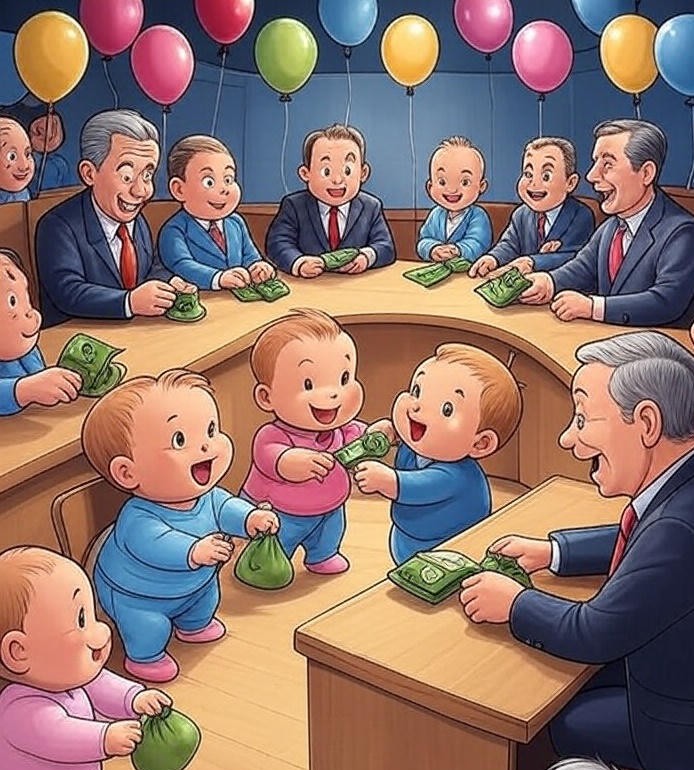 While looking at scam trends this evening I noticed a surge in online searches for “Baby of the Year scam.” Parents around the world are starting to question whether these contests are innocent fun or if the Baby of the Year contest is indeed a scam. Recent reporting, including a 6ABC investigation, confirms the competitions are real and winners are awarded. However they also warn about a system that thrives on emotional appeal, financial pressure, and limited transparency.
While looking at scam trends this evening I noticed a surge in online searches for “Baby of the Year scam.” Parents around the world are starting to question whether these contests are innocent fun or if the Baby of the Year contest is indeed a scam. Recent reporting, including a 6ABC investigation, confirms the competitions are real and winners are awarded. However they also warn about a system that thrives on emotional appeal, financial pressure, and limited transparency.
Good Housekeeping is not endorsing the winner; they are simply selling ad space.
At first glance, Baby of the Year looks legitimate. Jessica Alba promotes it, the nonprofit Baby2Baby is listed as a beneficiary, and the winner receives $25,000 along with a promised Good Housekeeping feature. The detail often overlooked is this magazine spread is not an earned editorial honour, it is a paid advertisement, purchased by the organizers, presumably with the vote money they claim is going to charity. Simply put, Good Housekeeping is not endorsing the winner; they are selling ad space.
Notifications about “top rankings” or “finalist status” add urgency, nudging parents toward further spending in the belief victory is within reach.
The voting system reveals the contest’s real engine. Each entrant receives one free vote per day, however, meaningful progress requires the mass purchase of votes or rallying friends and family to spend. The competition quickly shifts from showcasing children to testing how much money participants are willing or pressured to spend on buying votes. Notifications about “top rankings” or “finalist status” add urgency, nudging parents toward further spending in the belief victory is within reach.
Even more concerning is the lack of financial transparency. While organizers highlight their connection to Baby2Baby, they do not clearly disclose what percentage of the revenue from paid votes actually reaches the nonprofit. Without verified reporting, parents are left to trust claims rather than facts. The fundraising element may overshadow the charitable one, with the bulk of money flowing into the company’s pockets.
In an era where digital footprints last forever, oversharing children’s information exposes risks that extend far beyond a single contest.
Beyond the financial cost, there is the question of privacy and long-term security. Submitting a child’s name, photos, and personal details often means granting the organizers broad rights to use that content indefinitely. Once online, those images and details can spread beyond a parent’s control, resurfacing years later in ways never anticipated. In an era where digital footprints last forever, oversharing children’s information exposes risks that extend far beyond a single contest.
This formula is not limited to baby competitions. Pet photo contests, talent showcases, and modeling searches often rely on the same mechanics: free entry, paid voting, manipulative finalist notices, and extensive collection of personal content. Each variation prioritizes the financial gain of organizers while offering minimal assurance of fairness or meaningful recognition.
To be clear, these contests are not fraud, in the criminal sense, as winners do receive prizes, and charities do benefit in some capacity. But legality should not be mistaken for fairness. Parents considering participation should slow down, read the fine print, and question whether paying for votes or surrendering personal data truly serves their childs best interests.
The spike in searches for “Baby of the Year scam” and "Is Baby of the Year a scam" is more than a curiosity, it is a warning sign families are beginning to question the hidden costs. These competitions function less as celebrations of children and more as money making machines powered by parental ego pride. When personal data, financial pressure, and children’s images are on the line, the real winners are rarely the families who enter.
- Log in to post comments
